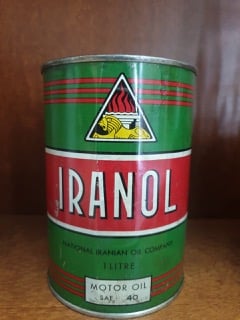
The story of the logo of one of the largest oil companies in the Middle East
Since 1941, the National Iranian Oil Company (NIOC) has been responsible for organizing and policy-making activities of the oil industry, including exploration, drilling, production, research and development, as well as oil and gas exports.
The company is one of the largest oil firms in the world with huge hydrocarbon reserves. With the advancement of knowledge and technology in the oil industry, the NIOC’s stance has also been upgraded. Therefore, national and regional policies, and cooperation with important industrial countries in the field of energy supply and stabilization in global oil markets are on the company’s agenda.
According to Article 44 of the Iranian Constitution, the NIOC has taken effective action in establishing economic enterprises by delegating authority to various sectors, while supervising the activities of the oil industry.
First Logo: a Lion, a Torch and a Triangle
The modern National Iranian Oil Company (NIOC, or “Sherkat-e Melli-ye Naft-e Īrān”) displaced the Anglo-Persian Oil Company (APOC, controlled by BP) in 1951, after Iranian parliament nationalized the Iranian oil industry by an unanimous vote.
Here we are going to have a look at the first Emblem of NIOC that was used from the 1950s to the early 1980s during the reign of second king of Pahlavi dynasty, Mohammad Reza Shah, and early years of the Revolution.

As we can see, 3 elements have been used in the design of this emblem. It seems that these elements are taken from ancient Iranian (or Aryan) origins, which were pretty significant during that period due to nationalistic tendencies of that era and the monarchy.
The first one is the lion. Lion is somehow the symbol of Iran and its rich history. For example, the Lion and Sun (Šir-o xoršid) is one of the main emblems of Iran (former Persia), and was an element in Iran’s national flag until the 1979 Iranian Revolution.
The second element is the torch; it is obviously a symbol of fuel (it was used also by American Amoco). It also somehow reminded Iranian people of the sun element of former Iranian flag that we talked about, remember “the Lion and Sun”?
It could be also a reference to Mithra (deity of covenants, contracts, and of course the rising sun), who encouraged piety and a proper relationship with the gods, that was also very important in old Iranian culture.
Also the base of the torch is somehow similar to the patterns that we can see in Persepolis, the ancient and magnificent capital of Persian (Achaemenid) Empire.
The last element is the surrounding triangle. This basic and simple geometric shape could alludes to the 3 primary teaching of Zarathustra (old Iranian prophet) which are the “the importance of good thoughts, good words and good deeds”.
This logo could be seen on all petroleum products and their derivatives, such as engine oils, insecticides, etc.
Second Logo: from Qoran to Oil
The second and current logo has an interesting story as well.

The designer himself speaks about 3 major themes when designing it.
The first element is similar to لا، لا mean “No” in arabic. It is part of a verse in Qoran, Islam holy book, that has this expression in it: “No eastern, no western”.
In the beginning of revolution, the religious and nationalist sentiments were among the major motivations for Iranian authorities to distance themselves from western and eastern influences.
At those days, during the Cold War, these emphasis on the national independence and sovereignty were common among Non-Aligned Movement (NAM) countries.
The second element is an Arabesque (or Eslimi, in Farsi language) decoration, a common form of art in Islamic and Iranian culture, that represents growth and blossoming of the economy.
The third element is a representative of fuel (a flame) as the main subject of an oil company.
Ida Mofakhami & Hojat Mohsenhaqiqi














